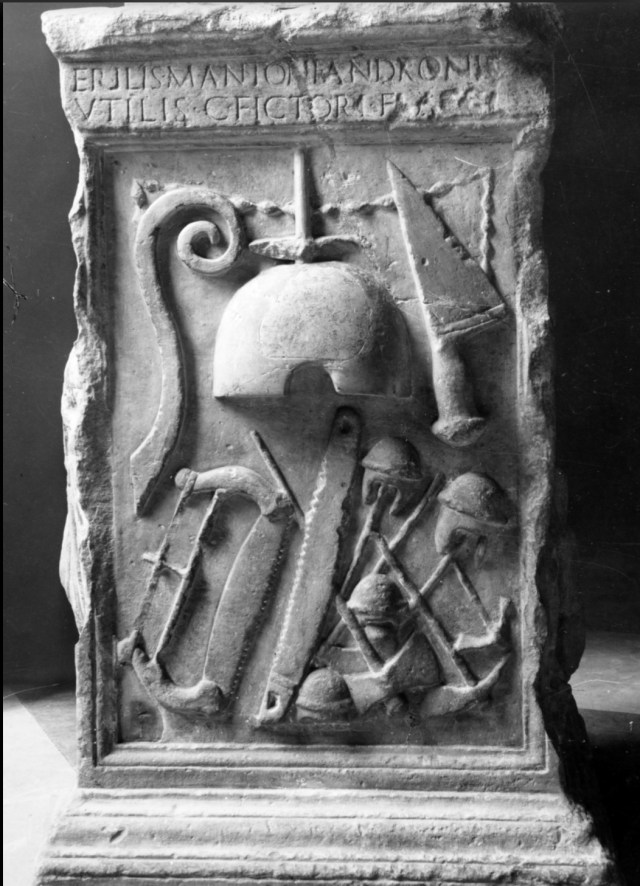
One of the important parts of my book on Roman workbenches concerns holdfasts. Likely a Roman invention, the origin of the holdfast and its early form remains a bit of a mystery.
Modern sources, such as Roger Ulrich’s “Roman Woodworking,” don’t shed much light on the tool. Instead these sources focus on what the Romans built more than the tools and processes used.
So Suzanne Ellison and I have turned to looking at Roman gravestones and monuments – hundreds and hundreds of them – to find clues about the Roman workbench and its workholding equipment.
We’d both dug up some drawings from this source – which is about 1,700 pages all told. Including one that looked like a holdfast. Probably.
But you have to be a little skeptical when you are looking at an old drawing of an even older monument that had been decaying for 1,500 years.
Then Suzanne found it. A photo (above) of the monument that clearly shows the holdfast with a curled-under proboscis – Suzanne calls it “the curlyfast.” (Shown is An altar to Minerva in the Capitoline Museum in Rome, erected by a ‘College of Fabri’ and dated 31 BC.)
Would this device work on the bench? If I were on an Internet discussion forum, on pain pills and in a particularly crotchety mood, I’d say: No way. And I’d make up some claptrap about the spring action of the curled-under front would resist the tensioning forces exerted by the shaft vis-a-vis. The point is moot. Lorum ipsum dolor.
But the truth is we don’t know. No, Gary, not even you know.
So I sent an email to blacksmith Peter Ross today….
— Christopher Schwarz